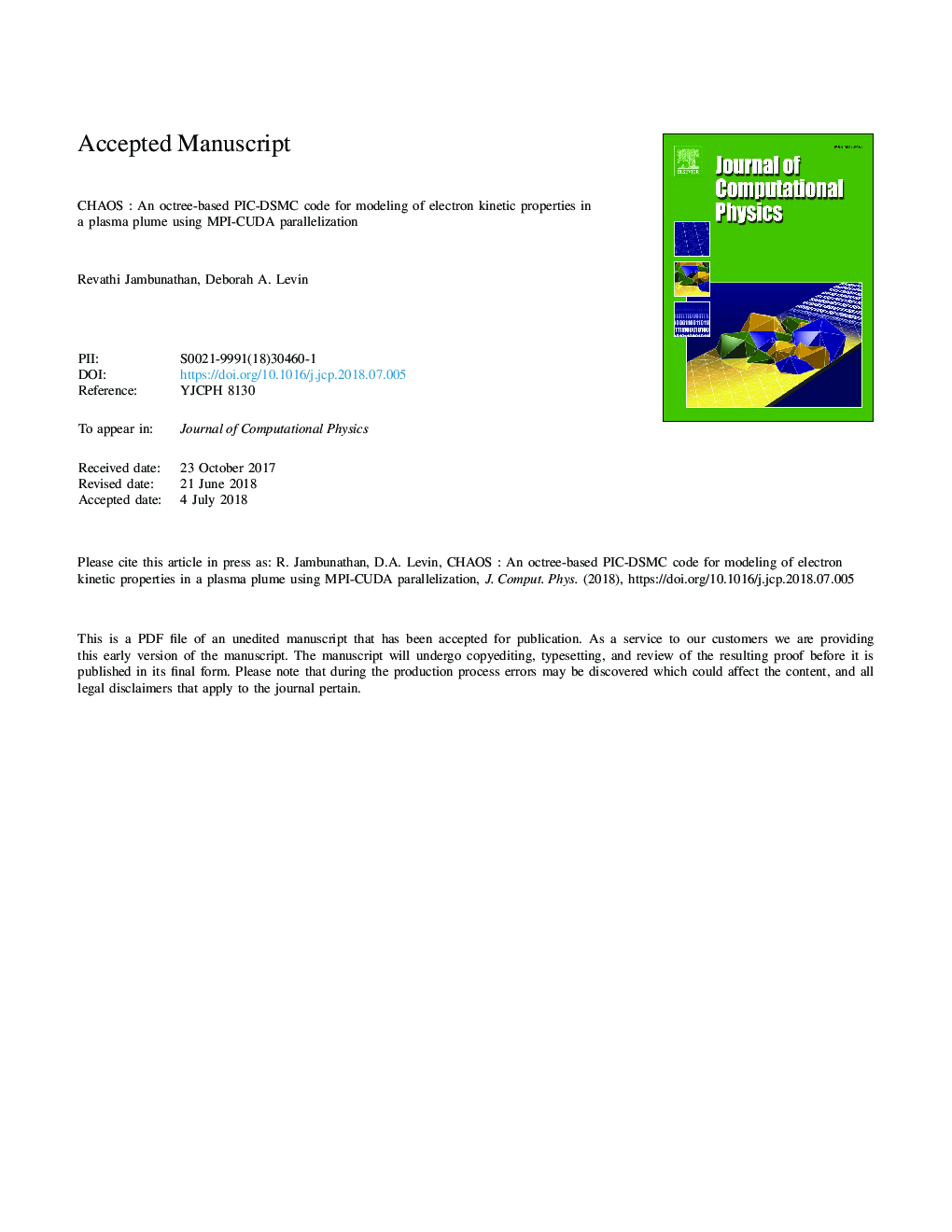| Article ID | Journal | Published Year | Pages | File Type |
|---|---|---|---|---|
| 6928541 | Journal of Computational Physics | 2018 | 78 Pages |
Abstract
A new computational framework for a coupled PIC-DSMC tool using multiple GPUs to model the kinetic behavior of electrons in plasma plumes is presented in this work. The disparate length scales of the Debye length and the collisional mean free path are resolved by using separate, independent linearized Morton Z-ordered forest of trees. A 2:1 restraint is imposed for the PIC module to solve partial differential equations in the context of an AMR/Octree framework. The MPI-CUDA parallelization strategies used to implement a preconditioned conjugate gradient method for solving the electrostatic Poisson's equation on the 2:1 octree are discussed and the scaling of the code to near ideal speedup as a function of the number of GPUs is demonstrated. The PIC method is validated using analytical test cases, and the octree-based PIC simulations are found to be ten times more efficient compared to the uniform grid method especially for plume simulations which have large density variations. The computational strategies are then demonstrated with the simulation of collisionless, mesothermal plasma plumes using a kinetic approach for both ions and electrons. The effect of ion mass and electron source location are analyzed by comparing plume dynamics and electron velocity distribution functions. It is shown that a more confined mesothermal plume is observed for the heavier xenon ions, present in electric propulsion devices, compared to protons. The confinement of the xenon plume traps the electrons resulting in higher electron temperatures compared to the proton plasma case. In both the simulations, however, the electron temperature is found to be anisotropic. Finally, when a shifted electron source location case is considered the electron velocity distributions in all three directions are found to be unequal and non-Maxwellian, contrary to the co-located case. The ion beam is observed to attract the electrons, which initially oscillate between the radial edges of the ion beam as confirmed by the bi-modal velocity distribution at early times. As the plume evolves, it electrostatically traps these electrons within the ion beam, allowing them to thermalize, as observed from the single-peak electron velocity distribution functions at later times. These results demonstrate that GPUs can efficiently accelerate computations of a fully kinetic approach to enable the study of electron kinetics and neutralization with the highest physical fidelity.
Related Topics
Physical Sciences and Engineering
Computer Science
Computer Science Applications
Authors
Revathi Jambunathan, Deborah A. Levin,
